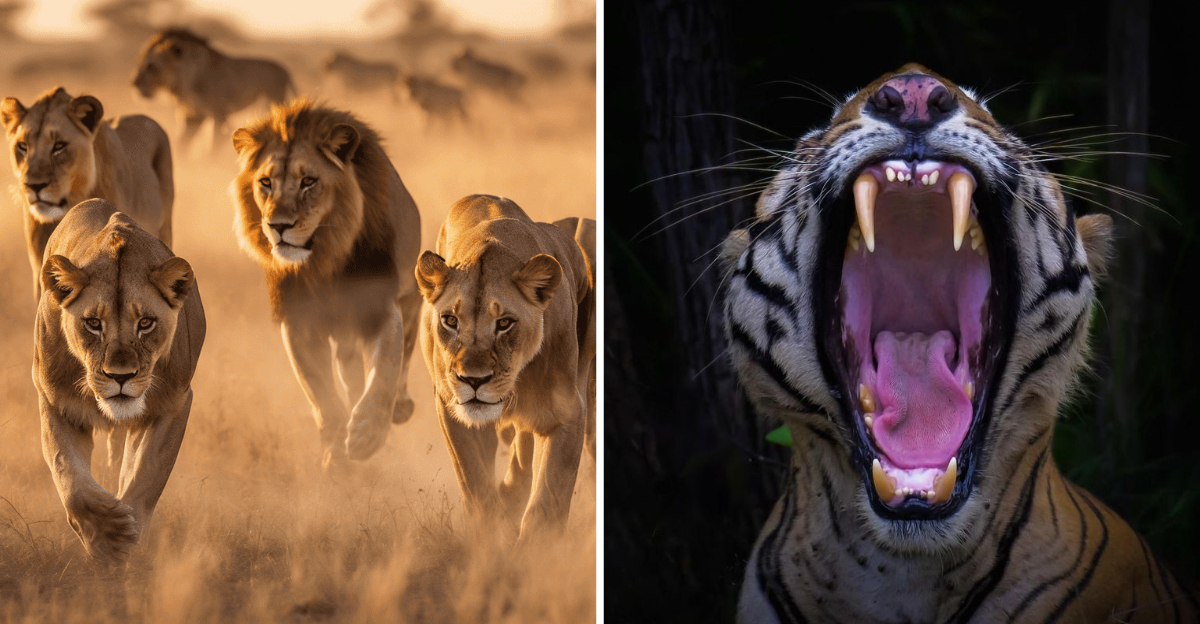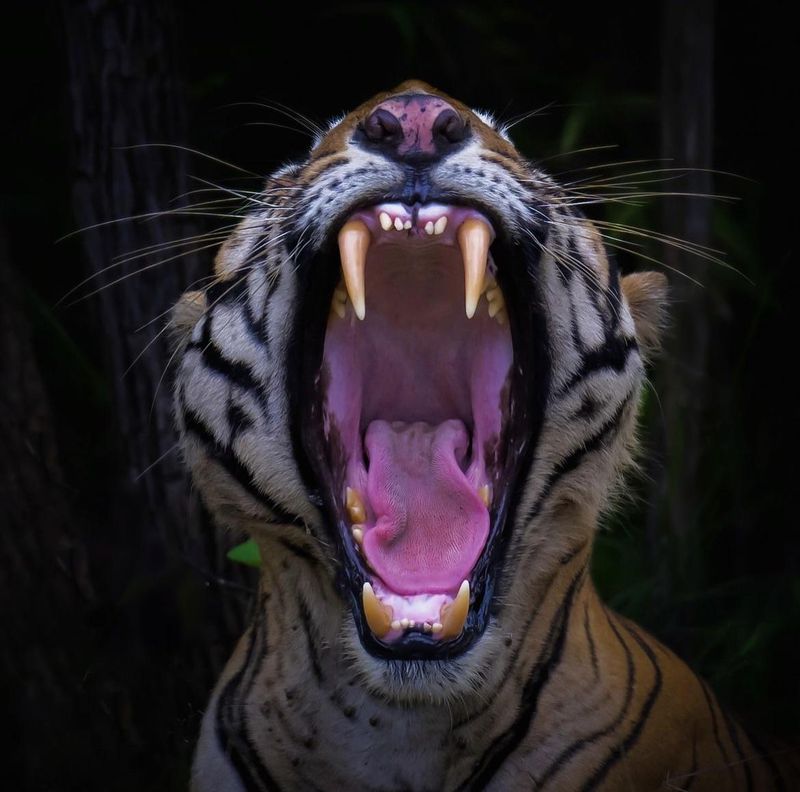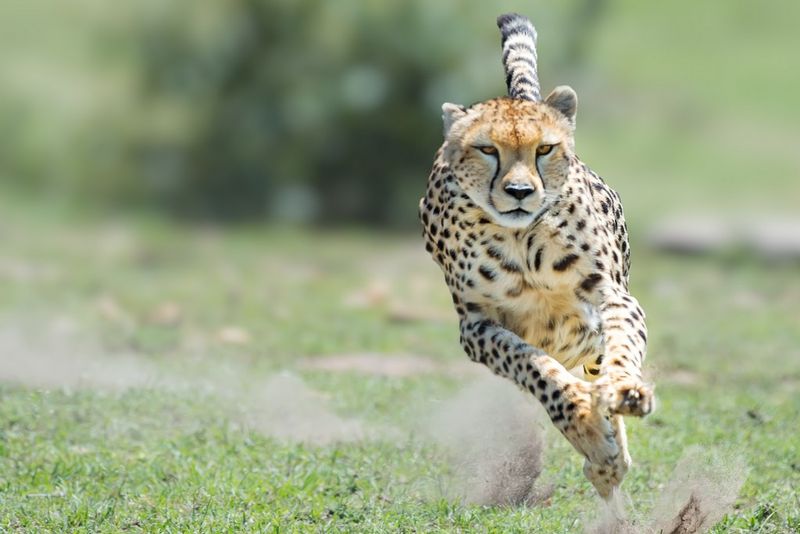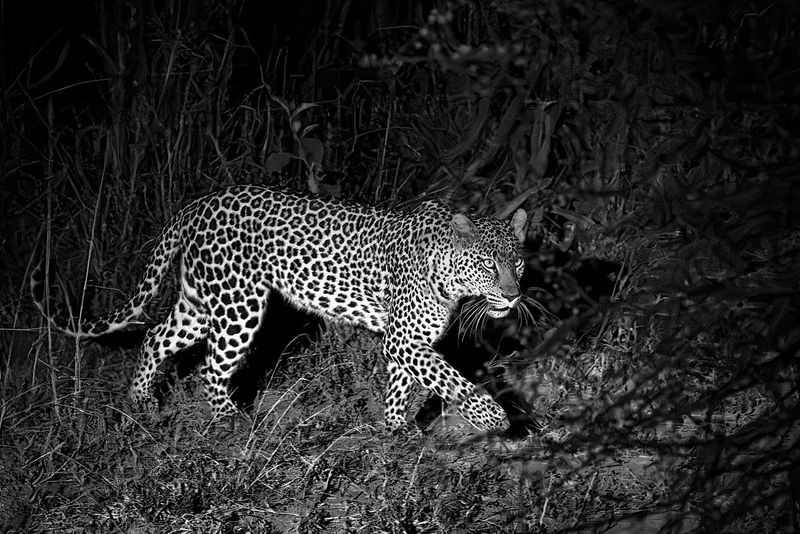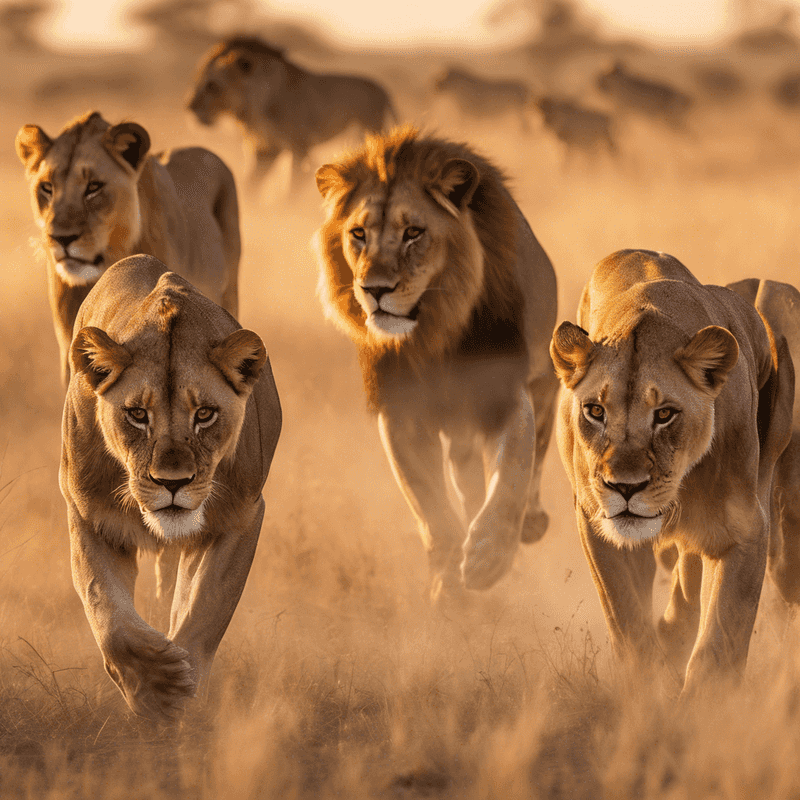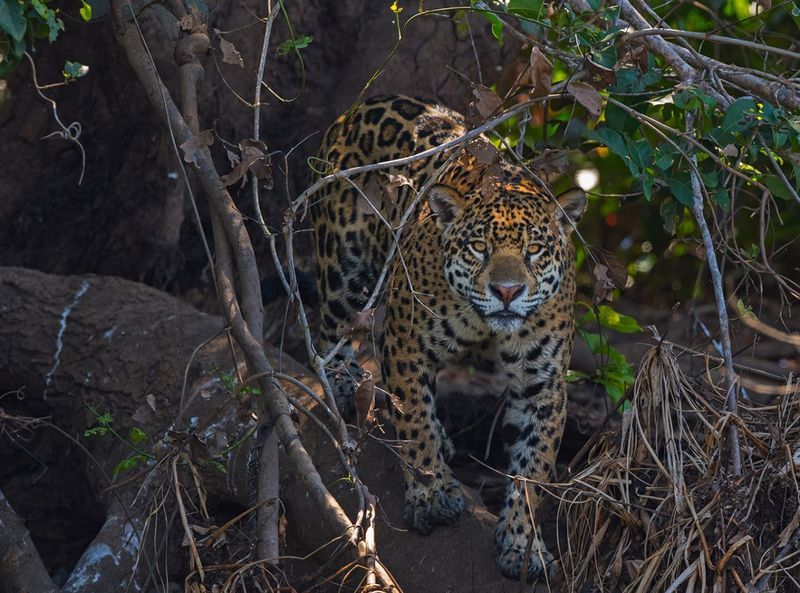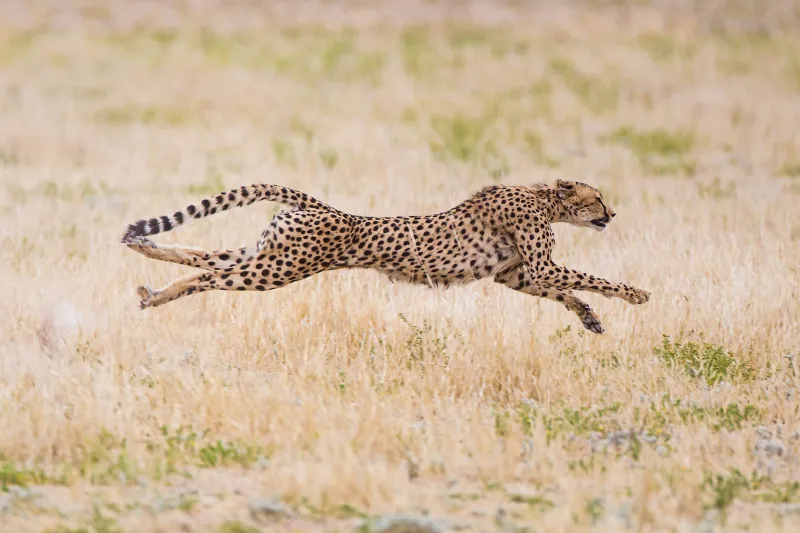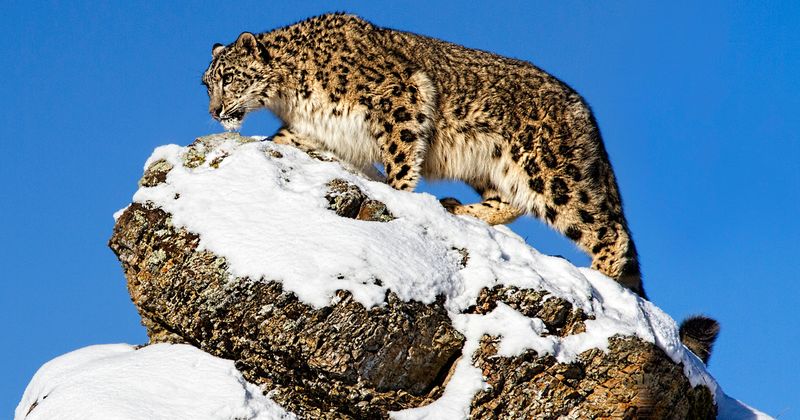📖 Table of Content:
Big cats, including lions, tigers, leopards, and jaguars, have evolved into nature’s elite hunters through a combination of anatomical adaptations, specialized hunting strategies, and environmental interactions. Their evolution has equipped them with the necessary tools to dominate the food chain.
1. Powerful Jaws and Teeth
With teeth as sharp as daggers, big cats possess a bite that is both lethal and efficient. Their powerful jaws act like a vice, gripping their prey with astonishing force. The carnassial teeth, akin to nature’s scissors, allow them to shear through flesh with ease. Did you know that a lion’s bite can deliver a force of over 650 psi? This incredible adaptation aids in both hunting and consuming a diverse diet, making them formidable predators.
2. Muscular Build and Agility
Muscles ripple with every movement, propelling these predators at breathtaking speeds. With flexible spines and powerful hind limbs, big cats can leap great distances in pursuit of their prey. The cheetah, for example, can reach speeds up to 60 mph in just a few strides. This agility is not just about speed; it also allows for stealthy ambushes and rapid course corrections during a chase. Their muscular build is a testament to their evolutionary prowess.
3. Enhanced Senses
Imagine seeing in near darkness and hearing the faintest rustle in the underbrush. Big cats possess extraordinary senses that give them a significant edge in hunting. Their night vision is six times more sensitive than that of humans, allowing them to detect prey in the dimmest light. Coupled with acute hearing and sensitive whiskers, these senses form a highly tuned hunting apparatus. Such adaptations not only facilitate hunting but also navigation in varied terrains.
4. Solitary and Cooperative Hunting
In the heart of the savannah, lions demonstrate an impressive social structure that enhances their hunting success. Known for their collaborative efforts, lion prides employ strategic teamwork to corner and capture large prey. This cooperative hunting method allows them to take down animals that would be too challenging for a single lion. Conversely, species like tigers excel in solitary hunting, relying on their stealth and power. These varied strategies exemplify the adaptability and intelligence of big cats.
5. Ambush and Stealth
Silent and unseen, the art of ambush is mastered by big cats like leopards and jaguars. Using natural camouflage, they blend seamlessly into their surroundings, waiting patiently for the perfect moment to strike. This stealthy approach conserves energy and increases the likelihood of a successful hunt. Jaguars, for example, are adept at stalking through dense forests, showcasing an unparalleled ability to adapt to challenging environments. Their stealth is a dance of patience and precision.
6. Speed and Endurance
Speed is the cheetah’s greatest asset, but it is paired with the endurance necessary for successful hunts. Capable of short bursts reaching 60 mph, cheetahs can close in on swift prey with remarkable efficiency. However, this speed must be used judiciously, as it requires significant energy reserves. Balancing speed with endurance, cheetahs exemplify the perfect pursuit predator. Their evolutionary design, with long limbs and lightweight bodies, maximizes speed while maintaining stamina.
7. Adaptation to Diverse Habitats
From the snowy peaks to arid deserts, big cats have adapted to a wide range of habitats. Each species has evolved traits that allow survival in specific environments. Snow leopards, for example, thrive in cold, mountainous regions, using their thick fur and padded paws to navigate rocky terrain. These adaptations ensure that big cats can exploit various ecological niches, maintaining their status as apex predators in diverse ecosystems.
